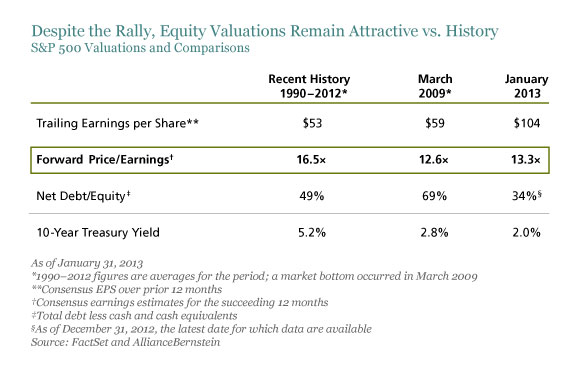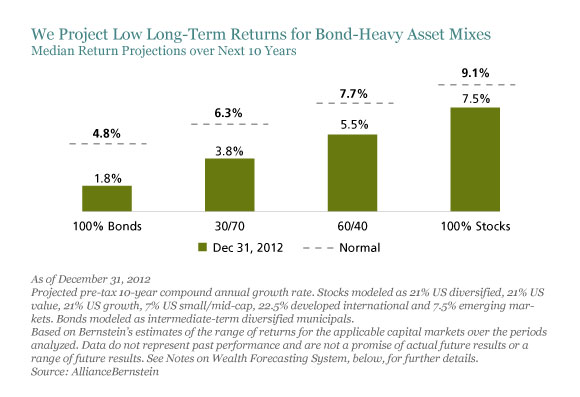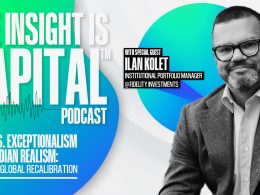by Seth J. Masters, AllianceBernstein
After five years of fleeing stocks for the perceived safety of bonds, US mutual fund investors became net buyers of stock funds in January. While some see the return of the retail investor as a negative indicator for stocks, we say, “Better late than never.”
The Dow Jones Industrial Average has finally surpassed its pre-crisis high. Volatility has subsided to nearly normal. And US mutual fund investors have regained enough confidence to become net buyers of stock funds again—although they have a long way to go to reverse their massive shift to bonds over the past five years.
Investors who sold stocks in the wake of the 2008 slump and didn’t get back in have missed the S&P 500 Index’s 125% rebound since the bottom in early 2009 and a similar rebound for global equities.
Fortunately for those investors, we don’t think the market has reached a top. Stocks are still attractively valued versus their own history and especially versus the bond-market alternative.
At the end of January, the S&P 500 was trading at just 13.3 times consensus estimates of earnings per share for the next year, well below its 16.5 average multiple from 1990 to 2012—and only marginally above its 12.6 multiple at the market bottom in March 2009, as the display below shows.
Yet the companies in the index are now earning nearly twice as much as they did back in 1990 and at the market bottom. Also, companies now have much higher-quality balance sheets, with average net debt/equity about half what it was at the market bottom.
While the market may temporarily retrace some of its recent gains, we think it still offers good—if below-average—long-term return potential, with international stocks somewhat more attractively priced than their US counterparts.
As always, there’s a wide range of possible market outcomes from here, but our median annualized return projection for globally diversified equities is 7.5% over 10 years. That’s below our normal expectation of about 9.1%, primarily because we expect the global economy to recover slowly from its current weak state, and corporate return on equity to normalize from current high levels. However, it’s still reasonably attractive in absolute terms—and very attractive versus the bond-market alternative.
Our median annualized return projection for a diversified intermediate-term municipal bond portfolio is just 1.8% over the next 10 years, well below half what we would normally expect, primarily because starting yields are close to 70-year lows.
With projected bond returns very low and stock-market returns somewhat below average, returns of most stock/bond mixes are likely to be below normal—especially those that are heavily skewed to bonds, as the second display, below, shows.
In a future blog post, I will discuss ways that investors could improve the odds of meeting their spending goals without taking on greater risk of large losses than they feel comfortable with.
The views expressed herein do not constitute research, investment advice or trade recommendations and do not necessarily represent the views of all AllianceBernstein portfolio managers.
The AllianceBernstein Wealth Forecasting System uses a Monte Carlo model that simulates 10,000 plausible paths of return for each asset class and inflation and produces a probability distribution of outcomes. The model does not draw randomly from a set of historical returns to produce estimates for the future. Instead, the forecasts (1) are based on the building blocks of asset returns, such as inflation, yields, yield spreads, stock earnings and price multiples; (2) incorporate the linkages that exist among the returns of various asset classes; (3) take into account current market conditions at the beginning of the analysis; and (4) factor in a reasonable degree of randomness and unpredictability.
Seth J. Masters is Chief Investment Officer of Bernstein Global Wealth Management, a unit of AllianceBernstein, and Chief Investment Officer of Defined Contribution Investments and Asset Allocation at AllianceBernstein.
Copyright © AllianceBernstein













